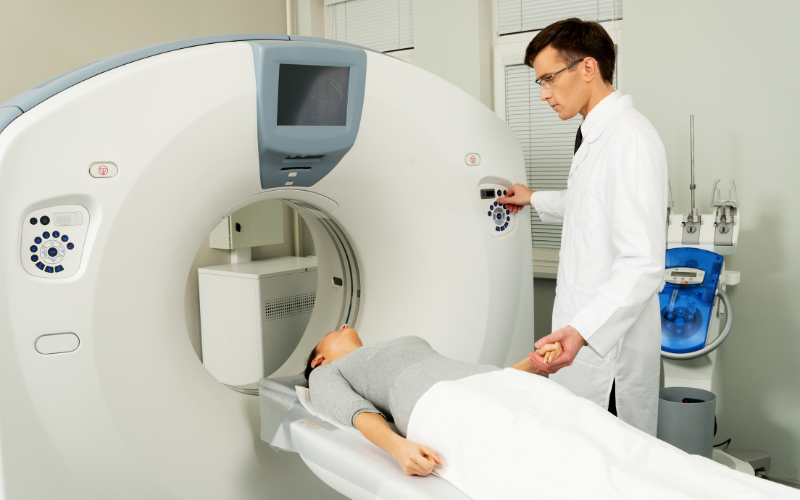
Abdominal (Belly) Imaging
Abdominal and pelvic imaging involves the evaluation of the liver, gallbladder, bile ducts, spleen, pancreas, kidneys, adrenal glands, small and large intestines, aorta, inferior vena cava, male/female pelvic organs, bones, and other structures to detect potential diseases.
Some Imaging Procedures Used in Abdominal Imaging:
Pelvic Ultrasound
Performed abdominally, vaginally, or rectally, this ultrasound technique uses sound waves to image the lower abdomen, pelvic organs, and structures. It is especially useful for evaluating reproductive organs and the urinary system. This method is non-invasive, does not use ionizing radiation, and is a safe imaging technique.
Enterography
Using MRI and/or CT, enterography is a sensitive and non-invasive imaging technique for evaluating conditions like lymphoma, tuberculosis, infectious bowel diseases, inflammatory bowel diseases, and other gastrointestinal disorders.
Renal Ultrasound
This ultrasound technique images the kidneys and the bladder.
Virtual Colonoscopy
This method uses the latest CT technologies and advanced software to visualize the entire colon from start to finish. It is painless, minimally invasive, and very fast. Virtual colonoscopy is an important technique for colon cancer screening, diagnosis, and monitoring high-risk groups.
Imaging of the Liver and Biliary Tract
Ultrasound, MRI, CT, and other imaging methods are used to evaluate the liver, gallbladder, and bile ducts.
Obstetric (Pregnancy) Ultrasound
A painless and non-invasive method, ultrasound (USG) is used in pregnant women to detect anatomical and functional anomalies in both the fetus and the expectant mother. It is routinely used in early pregnancy and for monitoring based on the pregnancy stage.